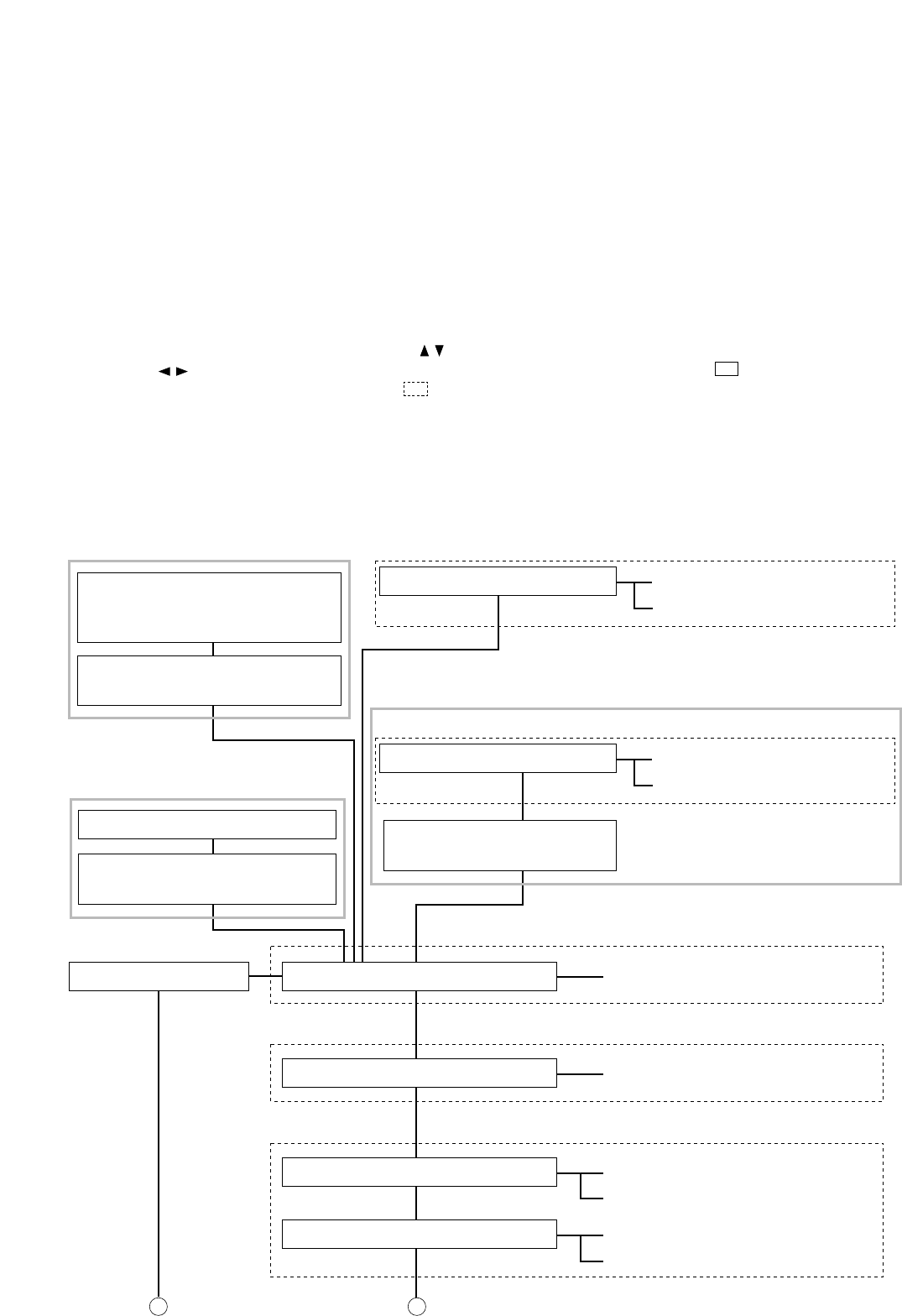
18
Note
It is highly recommended that any changed parameters be immediately saved as preset memory on the
Preset Memory setting screen. (Refer to p. 57, Preset Memory Save.) This permits the parameters of each
function to be saved and protected, even if the power is switched off. All currently saved parameters can be
recalled and reproduced when the power is switch on again. (Refer to p. 60, Initial Preset Memory Selection.)
Settings need not be saved when temporarily setting or changing parameters.
6.2. Setting Flowcharts
All the functions described hereinafter can also be set at a PC using the dedicated software. Please access
our website "http://www.toa-products.com/international/" for its download.
In the following charts, the Screen shift keys [ ] are used to move vertically (next screen display) and the
shift keys [ ] to move horizontally between the solid line setting screen boxes ( ) . For movements
within the dotted line setting screen boxes ( ) and parameter settings for each setting screen, refer to the
corresponding pages.
6.2.1. Input and output settings
Input 1 Gain Settings Input Trim Gain Settings
Cutoff Frequency Settings
Q settings
Input trim polarity settings
High-pass filter settings (p. 29)
Input trim settings (p. 28)
Phantom power ON/OFF Settings
(Only when the PAD is set to
"MIC.")
(p. 26)
(p. 26)
Line (Stereo) Input Selection
Line Input Mode Selection (p. 26)
PAD (Input Sensitivity) Settings
(Only when using the D-921E or D-921F
Microphone/Line Input Module)
(Only when using the D-936R Stereo
Input Module)
Gain Settings (low frequency)
Center frequency settings
Q settings
Equalizer settings (p. 30)
Gain Settings (high frequency)
Center frequency settings
Q settings
(To next page) (To next page)
1 2
(p. 28)
Line (Stereo) Input Selection
(Only when using the D-937SP Digital Input Module)
Channel Status Verification (p. 27)
(Only when using the D-923AE Digital Input Module)
(p. 28)
Input signal status verification
Sampling frequency verification
Pre-emphasis verification
Channel Status Verification (p. 27)
Input signal status verification
Sampling frequency verification
Pre-emphasis verification


















